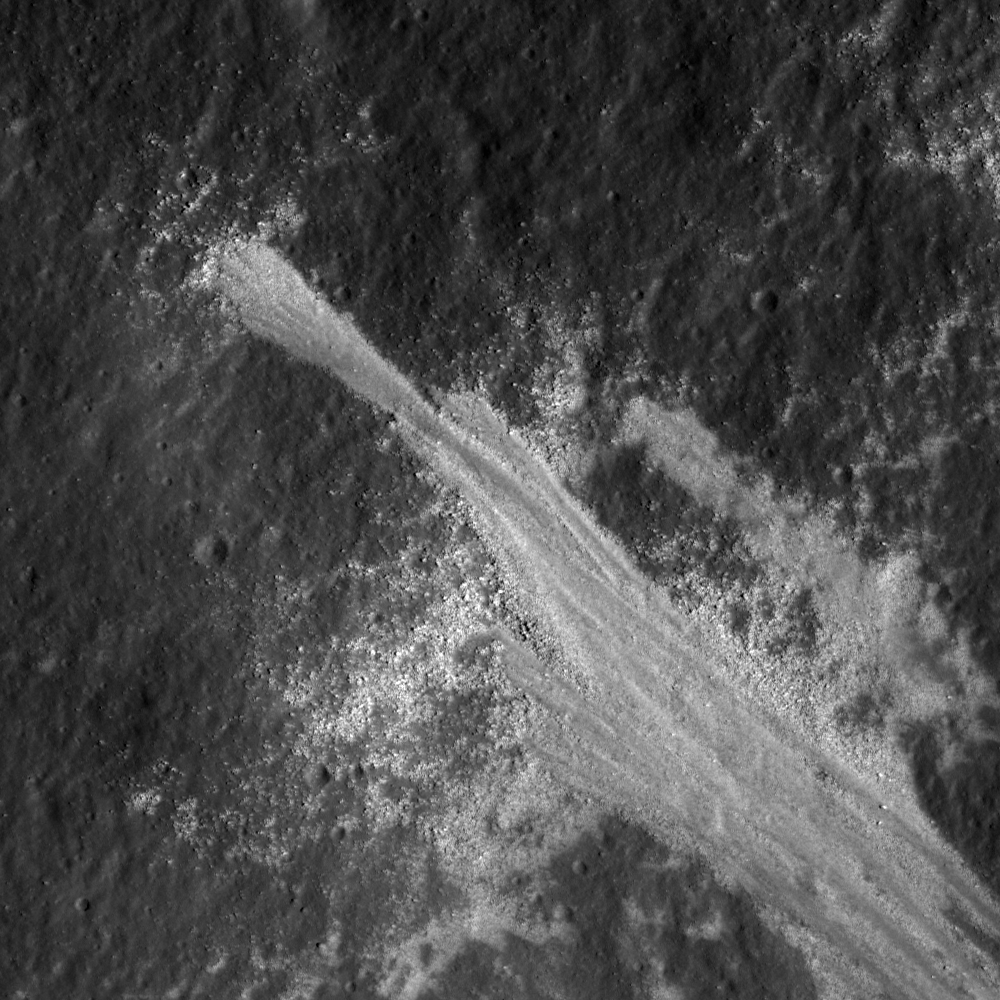
The stream of bright material is made up of blocks, boulders, and smaller sizes of rocks. This conglomeration of granular material slid down the wall of Riccioli CA towards the floor of the crater. The end of the flow, furthest toward the crater floor (upper left hand corner of the image), spreads out in a small fan, much like wet sediments at the end of a alluvial fan. It is amazing how the physics of wet material (Newtonian flow) in some cases applies to dry material! The Moon is dry and this slide was formed without the involvement of water.
The rock slide may have happened right after the impact that formed Riccioli CA or later in the crater's history. Over time the overall shape of the crater changes due to movements of rock such as slumping, rock slides, and ejecta thrown into the crater from other impacts. The occasional volcanic event can also dramatically change what a crater looks like (check out Archimedes the mare flooded crater).
Riccioli CA is 14 km in diameter, located at 0.58°S, 73.01°W just north of the crater Riccioli. Riccioli CA has the same name as the larger crater Riccioli because Riccioli CA is a satellite crater. Satellite craters are given the same name as a larger crater in the general area with a letter or letters after the main crater's name.
Explore the LROC NAC for more exciting features around the rim of Riccioli CA!
Related Images:
Rock avalanche in Robinson Crater
Moon or Abstract Expressionism?
Post-impact modification of Klute W
Published by Sarah Braden on 25 May 2011